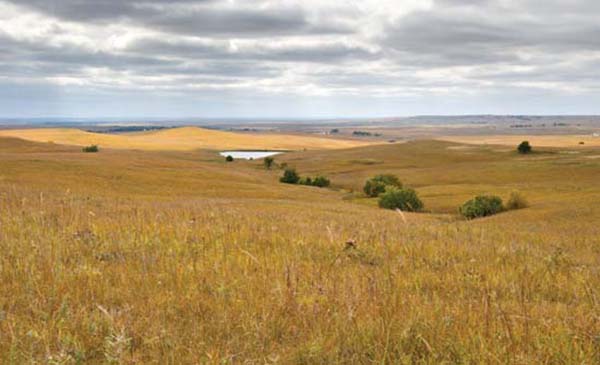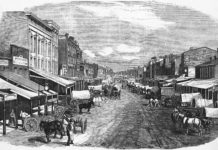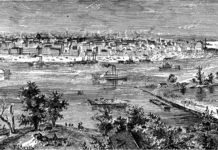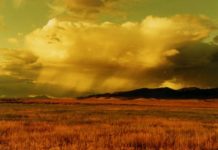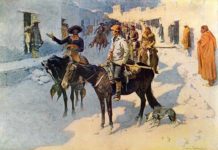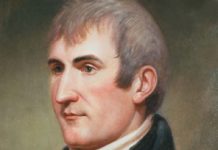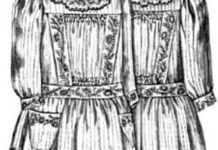When Coronado explored that part of the Great American Plains known today as Kansas this wild and rugged land was inhabited by the Wichita, Pawnee, Kansa, and the Osage people. Between 1682 and 1739 French explorers arrived to trade with the Indians. About1800 they were joined by the Cheyenne, Arapaho, Comanches, and the Kiowas. This pre-Kansas population continued to grow with the 1803 implementation of the Louisiana Purchase.
Kansas was a land with no mountains or swamps; only sinks and buttes, as well as badlands and chalk bluffs. Many years would pass before this vast area, containing some 126,000 square miles, would become a territory. At that time, in 1854, its eastern, northern, and southern boundaries were the same as they are today. The western boundary reached far across the plains to include “the summit of the Rocky Mountains” near its Colorado border.
Many years after the settling of Kansas and its statehood Brewster Higley wrote the words to the song “Home on the Range” which was adopted as the state’s song. Truly, before the buffalo skinners came, it was the place where the buffalo roamed. But that time would cease to be. In 1827 Fort Leavenworth was established as the first fort built west of the Missouri River. It was erected as protection from the Indians in the area and those who were soon to arrive due to the 1830 Indian Removal Act. In a few years the fort would serve the wagon trains moving westward as a starting point across the plains. The pioneers brought many items of civilization to the plains. As early as 1834 the first printing press was installed. At that time the Reverend Jotham Meeker, a missionary at the Shawnee Baptist Mission, began printing religious works in various Indian languages.
This same decade saw long trains of pack mules and heavily laden wagons traveling the Santa Fe Trail that crossed Kansas from the north to the southeast. Following in the wake of the Santa Fe traders, missionaries, and transplanted Native Americans came gold seekers, homesteaders, lawmen, and outlaws. The Great Plains saw some wild and uncivilized years. Kansas would experience considerably more turbulence, beyond severe dust storms, hailstones, and plagues of grasshoppers, before she became a state on January 29, 1861 and afterwards, right into the 1900’s.
Fort Scott, built in 1842 as a military post, would become a frontier town. Fort Riley, established in 1852, became the headquarters for the U.S. Seventh Cavalry during the Indian Wars. Fort Larned was an important post on the Santa Fe Trail. But Kansas wasn’t through growing or being wild. Fort Hays welcomed droves of cattle and gun-toting cowboys spending their pay during the days of the open range. Dodge City, where the railroad reached in 1872, was the “Queen of the Cow Towns” and was famous for its “Boot Hill” while Abilene meant the end of the Old Chisholm Trail.
Out on the dust-blown Kansas prairie the sod houses of the homesteaders were built. Some of them would still be in use through the early years of the 1900’s. A Mr. John Trotter’s parents had been Kansas immigrants, just as his wife’s had. In 1914 Mr. and Mrs. Trotter, on a farm near Hutchinson, Kansas, became parents to a baby they named Wesley. Some years later Wesley and his wife made their first home in one of those old sod houses on the Kansas Plains. More years passed and they presented Mr. and Mrs. John Trotter with a granddaughter who was born on another farm on the Nebraska Plains. By the way, I am that granddaughter.


